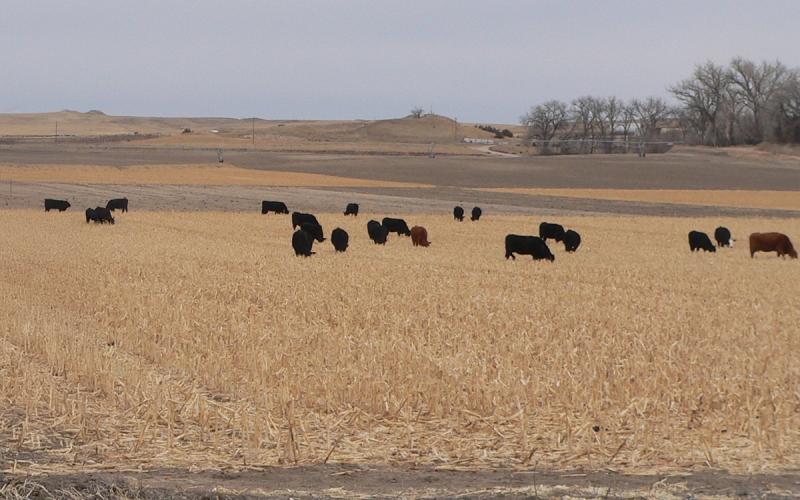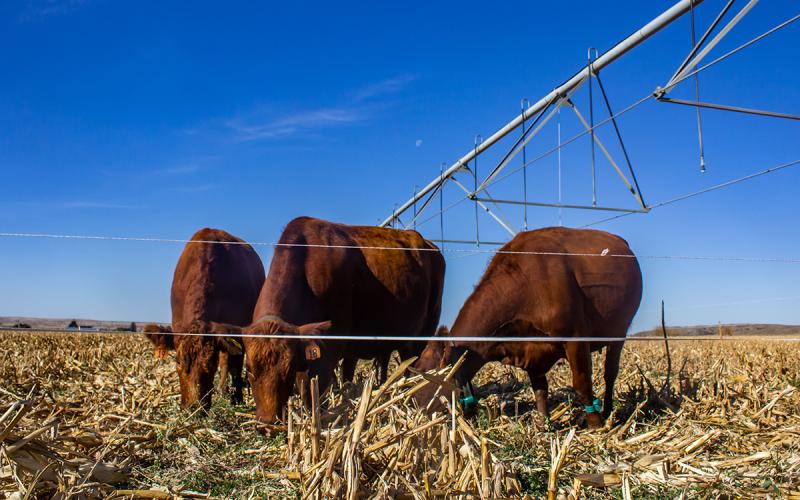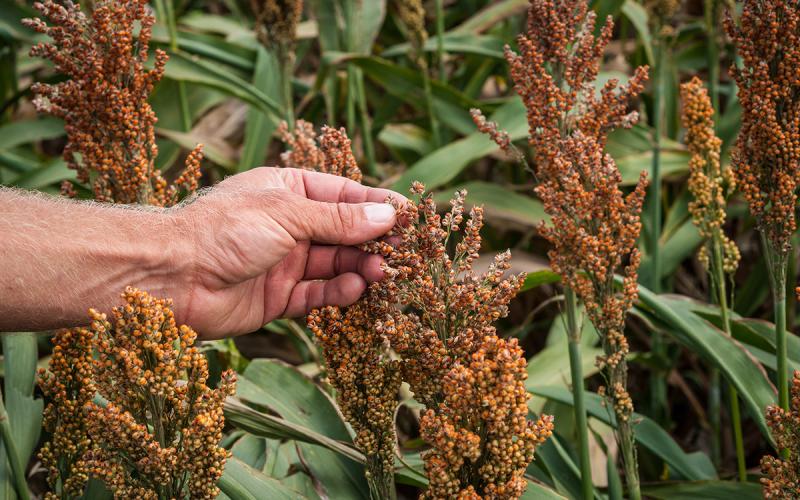Lower Critical Temperature
Decreasing temperatures impact the amount of energy required by animals. In Table 1, the lower critical temperature is provided based on coat description. In simple terms, when will the animal need to use more energy to keep warm? A rule of thumb is that energy requirements (TDN) increase 1% for every degree below the animal’s lower critical temperature. If this additional energy isn’t provided the body will compensate by metabolizing fat storage to maintain body temperature. To prevent the loss of body condition, this energy must be supplied.
|
|
|
|---|---|
| Summer or Wet | 60 °F |
| Dry Fall Coat | 45 °F |
| Dry Winter Coat | 32 °F |
| Dry Heavy Winter Coat | 19 °F |
*Below the critical temperature, livestock must expend more energy to keep warm. Adapted from D.R. Ames, Kansas State University.
Additional Energy Requirements
How much additional energy is required for colder temperatures? First, we need to establish what the baseline requirements are when the temperatures are not colder than the lower critical temperature. For a 1400-pound cow in the last trimester of gestation requires 15.5 pounds of total digestible nutrients (TDN) at 32 °F. In Table 2, you can find the additional TDN required based on a few colder temperatures.
|
|
|
|
|
|---|---|---|---|
| 15 °F | 16.3 | 1.5 pounds on DM | 1.4 pounds on DM |
| 0 °F | 17.0 | 2.8 pounds on DM | 2.7 pounds on DM |
| -15 °F | 17.8 | 4.3 pounds on DM | 4.1 pounds on DM |
(New TDN required - Baseline TDN) ÷ TDN of feedstuff = pounds of feedstuff on a dry matter basis
Meeting Energy Requirements
The next question becomes how many additional pounds of feed is needed to meet this energy requirement. This depends on the TDN content of the feedstuff. For instance, at 0 °F temperature with a 54% TDN hay an additional 2.8 pounds on a dry matter basis or 3.2 pounds as fed assuming an 88% DM for the hay (Table 2). Nutrient testing your forages and feed allows you to correctly determine the additional forage needed.
If an animal is already consuming 100% of their daily intake, does supplying the additional forages meet these requirements? Animals can increase their daily intake with higher quality feeds. Table 3 provides an estimate of daily intake by animal classification and forage quality. So, switching to a higher quality forage source would allow the animals to consume more forage. Additionally, as temperatures decline cattle will increase dry matter intake (Table 4). Hence, with colder temperature supply “extra” feedstuff can be used by cows to meet their additional energy requirement without changing the ration.
|
|
|
|
|
|---|---|---|---|
| Growing and finishing cattle | 1.0% | 1.8 to 2.0% | 2.5 to 3.0% |
| Dry mature cows and bulls | 1.4 to 1.6% | 1.8 to 2.0% | 2.3 to 2.6% |
| Nursed cows | 1.6 to 1.8% | 2.0 to 2.4% | 2.5 to 3.0% |
*As a percent of body weight (BW).
|
|
|
|---|---|
| 59 to 77 °F | No impact due to temperature |
| 41 to 59 °F | 2 to 5% |
| 23 to 41 °F | 3 to 8% |
| 5 to 23 °F | 5 to 10% |
| < 5 °F | 8 to 25% |
Table.Spacer
In Summary
Managing cow’s increased energy (TDN) requirement through increased daily dry matter intake reduces the possibility of metabolic disturbance without special equipment. Providing wind protection and bedding reduces the amount of extra energy required by the animals; so including these management practices along with increased forage will ensure that you are able to maintain the cow’s body condition score.


